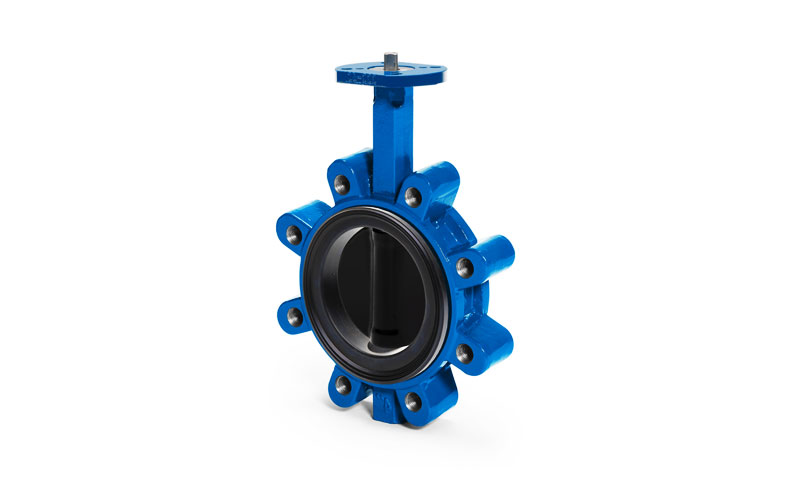1. Вступ
Custom Butterfly valves are essential components in modern fluid control systems, known for their compact design, fast operation, і універсальність.
Originally conceptualized in the early 20th century, these клапани have evolved significantly to meet the growing demands of industries requiring efficient and cost-effective flow control solutions.
Сьогодні, butterfly valves are widely used in diverse sectors such as очищення води, нафта і газ, ОВК, Хімічна обробка, морський, і їжа та напої industries.
Their popularity stems from their ability to handle a broad range of fluids—including gases, рідина, and slurries—with minimal pressure drop and rapid shutoff capabilities.
2. What Is a Butterfly Valve?
A butterfly valve is a type of quarter-turn rotary valve used to regulate, isolate, or control the flow of fluids, гази, or slurries in piping systems.
Its name is derived from the disc’s operation, which resembles a butterfly’s wings as it rotates within the valve body.
Butterfly valves are widely recognized for their компактний дизайн, quick actuation, низька вартість, і broad size range, making them suitable for both low- and high-pressure applications across a variety of industries.
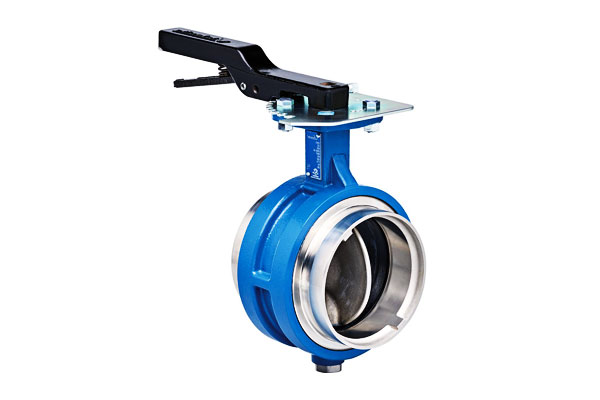
Core Components and Their Functions
Корпус клапана
The valve body is the outer casing that houses all internal components and interfaces with the pipeline through wafer, перекидання, фланцеві, or butt-welded ends.
Valve sizes typically range from DN50 (2 дюймів) to over DN3000 (120 дюймів) for large-scale industrial applications.
Butterfly Disc
The disc is the rotating element that regulates flow. Shaped like a circular or elliptical plate, it is mounted either centrally or slightly offset on the shaft.
When rotated 0° (parallel to the flow), the disc allows full flow through the valve. When turned 90° (perpendicular), it fully blocks the flow, achieving shutoff.
Valve Stem (Shaft)
The stem connects the actuator to the disc, transmitting the torque necessary for rotation.
In large or high-pressure valves, the stem may include upper and lower bearings or bushings to reduce operating torque and extend service life.
Місце (Запечатувати)
The seat is a ring-shaped sealing surface located inside the valve body. It interacts with the disc edge to provide a tight seal when closed. The seat plays a critical role in leak-tightness and longevity.
Actuator
A mechanism (посібник, пневматичний, електричний, or hydraulic) that drives the disc’s rotation. Manual actuators use handwheels or levers; automated versions integrate with control systems for remote operation.
3. Working Principle of Butterfly Valves
Butterfly valves function based on a quarter-turn rotational motion that controls the position of a disc relative to the flow path.
The simplicity of this design allows for quick operation, Надійне відключення, and efficient flow modulation, making them widely used in both on-off and throttling applications.
Basic Operating Principle
At the heart of a butterfly valve’s operation is the disc, which rotates around a central or offset shaft:
- Open Position (0°): When the disc is aligned parallel to the flow direction, the valve offers minimal flow resistance.
This allows the medium to pass through almost unimpeded, resulting in a low-pressure drop across the valve. - Закрите положення (90°): When the disc is rotated perpendicular to the flow, it presses tightly against the seat, forming a seal that stops the flow.
Depending on the valve type (resilient, high-performance, or triple offset), this seal may be either soft or metal-to-metal. - Дросель (10°–80°): Intermediate positions allow partial opening of the valve, where the disc restricts the flow similar to an orifice plate.
The valve can be used to control flow rate, although accuracy varies based on disc design and valve type.
Flow Modulation Characteristics
The relationship between disc angle and flow rate is non-linear, particularly for standard resilient-seated butterfly valves.
At lower disc angles, small movements cause significant changes in flow, which can make precise modulation challenging.
Однак, high-performance and triple offset butterfly valves offer improved control characteristics and are better suited for regulated flow applications.
Sealing Mechanisms
Butterfly valves achieve shutoff through direct contact between the disc edge and the valve seat. З type of seal determines both the performance and application suitability:
- Resilient-Seated: Utilizes a soft elastomeric seat (Напр., EPDM, NBR) for bubble-tight sealing.
Ideal for low- to medium-pressure systems but may degrade in corrosive or high-temperature environments. - High-Performance (Double Offset): The disc is offset from the seat centerline, reducing friction during operation and improving sealing under pressure. Suitable for moderate pressure and temperature applications.
- Triple Offset: Adds a third geometric offset to eliminate friction entirely during operation, дозволяючи metal-to-metal sealing suitable for high-pressure, high-temperature, and critical service conditions.
Speed of Operation
Thanks to the 90° rotational motion, butterfly valves can be operated rapidly:
- Manual valves typically require one quick turn of the lever or several turns of a gearbox.
- Automated valves (електричний, пневматичний, або гідравлічні приводи) can open or close in 1 до 5 секунди, depending on valve size and actuator type.
This speed makes butterfly valves ideal for emergency shutdown systems (ESD), frequent cycling operations, or processes requiring rapid flow isolation.
4. Types of Butterfly Valves
Butterfly valves come in a wide variety of configurations tailored to specific installation requirements, performance criteria, and actuation preferences.
They are commonly classified based on body design, продуктивність герметизації, і спосіб приведення в дію.
Based on Body Design
This classification refers to how the valve connects to the piping system and how it is supported structurally.
Wafer Type Butterfly Valve
З wafer-style butterfly valve is the most common and cost-effective design.
It is designed to be sandwiched between two pipeline flanges using long bolts that pass through the valve body and both flanges.
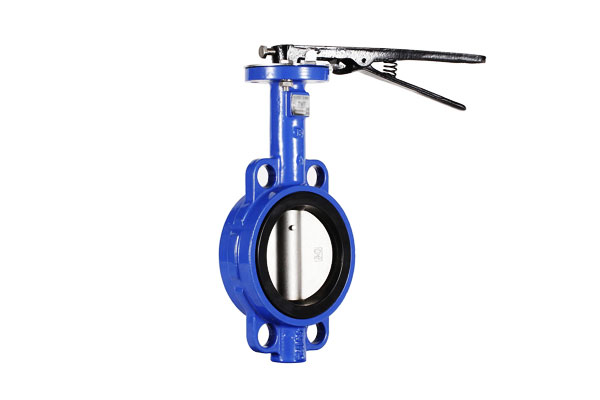
The wafer valve provides a tight seal against bi-directional pressure, preventing backflow.
Однак, it does not support downstream piping, so it is not suitable for applications requiring dead-end service.
Lug Type Butterfly Valve
The lug design features protruding lugs with threaded inserts around the valve body, allowing the valve to be bolted to each flange separately.

This configuration enables one side of the piping system to be disconnected without affecting the other, making it useful for systems that require periodic maintenance or isolation of a single side.
Lug-type valves are suitable for dead-end service when installed with the appropriate pressure rating.
Double Flanged Butterfly Valve
The double-flanged design includes flanges on both ends of the valve body, which are bolted directly to the pipeline flanges.
This construction provides enhanced mechanical strength and support for heavy piping systems.
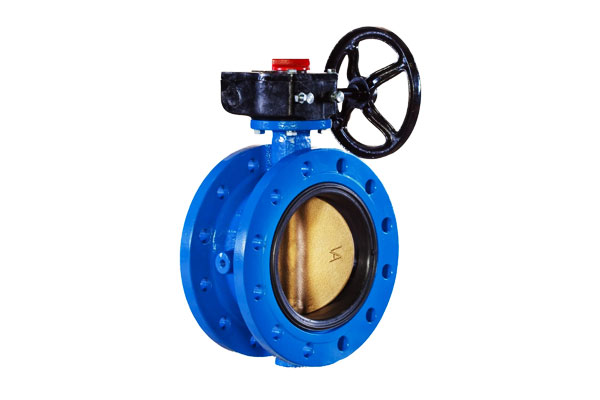
It is particularly suited to large-diameter pipelines, buried installations, and applications involving frequent opening and closing.
Butt-Welded End Butterfly Valve
In this type, the valve is permanently welded to the pipeline, eliminating flanged joints and reducing potential leak points.

This design is ideal for high-pressure, high-temperature, or hazardous environments where joint integrity and long-term sealing are critical.
Typical applications include oil and gas, розподіл пари, and process plants handling toxic or flammable fluids.
Based on Sealing and Performance
Butterfly valves also vary based on the sealing mechanism and their suitability for different pressure and temperature conditions.
Resilient-Seated Butterfly Valve
These valves use a soft elastomeric seat (such as EPDM, NBR, or Viton) to provide bubble-tight shutoff.
The disc compresses against the seat to form a seal, which is effective for clean water, повітря, and non-aggressive fluids.

Resilient-seated valves are widely used in water treatment, ОВК, and low-pressure industrial applications.
They typically operate within a pressure rating of PN10–PN16 and temperatures up to 200°C.
High-Performance Butterfly Valve (Double Offset)
High-performance butterfly valves incorporate a disc that is offset from the centerline of both the pipe and the shaft.
This double-offset design reduces friction between the disc and seat during operation, extending the valve’s lifespan and allowing it to handle higher pressures and temperatures—up to Class 300 and around 400°C.
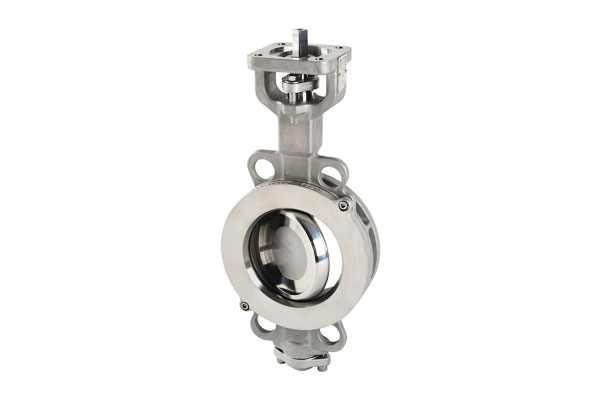
These valves are suited for applications in power generation, petrochemical systems, and steam service.
Triple Offset Butterfly Valve
The triple offset design includes a third geometric offset that results in a conical seating surface, eliminating rubbing between the disc and seat.
These valves typically use metal-to-metal seating, allowing them to achieve zero-leakage shutoff (Клас VI) under high-pressure and high-temperature conditions—up to Class 600 and 600°C.
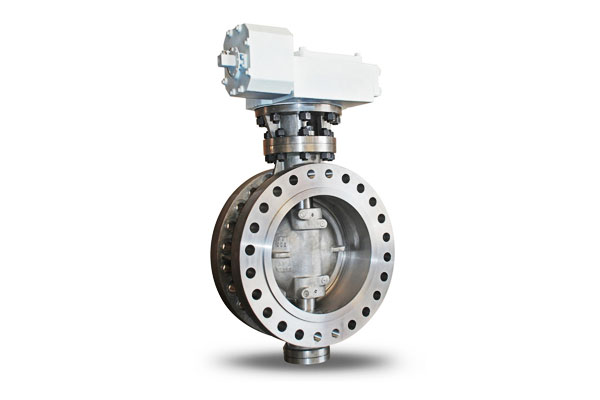
Triple offset valves are ideal for critical applications such as steam, cryogenic service, hydrocarbon processing, and corrosive chemical handling.
Based on the Actuation Method
The actuation method determines how the valve is operated—manually or through automation.
Manual Actuation Butterfly Valve
Manual butterfly valves are operated using a lever (for small diameters) or a gear operator (for larger sizes). Вони економічно вигідні, simple to install, and easy to maintain.
These valves are appropriate for systems where flow changes are infrequent and remote operation is unnecessary.
Electric Actuation Butterfly Valve
Electric actuators use a motor to open and close the valve disc, providing precise control over valve positioning.
These actuators can be integrated into automated systems such as SCADA or PLCs, enabling remote operation and diagnostics.
Electric actuation is commonly used in building automation, water distribution networks, and industrial process control.
Pneumatic Actuation Butterfly Valve
Pneumatic actuators operate the valve using compressed air. They are known for rapid response times and reliable cycling.
Pneumatic butterfly valves are commonly found in chemical plants, food processing facilities, and clean-in-place (CIP) системи, where frequent actuation and quick shutoff are required.
Hydraulic Actuation Butterfly Valve
Hydraulic actuators use pressurized hydraulic fluid to generate torque, making them suitable for large-diameter valves or systems with high operating pressure.
They offer excellent force transmission and are used in demanding industries such as offshore drilling, електростанції, and heavy manufacturing.
5. Materials and Coatings of Butterfly Valves
The choice of materials and coatings in butterfly valve construction is critical to ensuring durability, хімічна сумісність, цілісність тиску, і корозійна стійкість.
Depending on the application—whether it’s potable water, корозійні хімікати, пара, or slurry—various combinations of body, диск, місце, and coating materials are selected to meet operational and environmental demands.
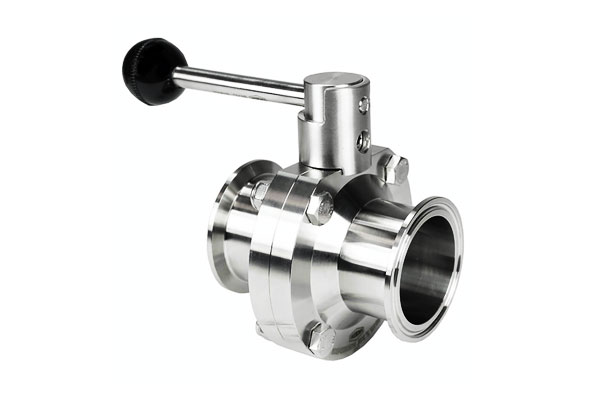
Valve Body and Disc Materials
The valve body and disc are structural components that must withstand internal pressure, mechanical stress, та хімічна експозиція. Загальні матеріали включають:
- Чавун (CI)
Cost-effective and widely used in low-pressure water and HVAC systems. Not suitable for corrosive or high-temperature applications. - Пластичне залізо (DI)
Stronger and more impact-resistant than cast iron. Often used in water distribution, wastewater treatment, and fire protection systems. - Вуглецева сталь
Suitable for high-pressure systems and industrial environments. Requires protective coatings to prevent corrosion. - Нержавіюча сталь (SS304/SS316)
Відмінна резистентність до корозії; commonly used in chemical processing, Морські середовища, and food-grade applications. SS316 offers superior resistance to chlorides and acids compared to SS304. - Bronze or Nickel-Aluminum Bronze (NAB)
Commonly used in seawater applications due to their exceptional resistance to saltwater corrosion and biofouling. - Duplex and Super Duplex Stainless Steel
Provide high mechanical strength and excellent resistance to pitting, Корозія щілини, і стрес -розтріскування. Ideal for aggressive chemical or offshore environments. - ПВХ, CPVC, and Other Plastics
Легка та корозійна стійкі; ideal for chemical dosing, low-pressure water, and non-metallic piping systems.
Місце (Запечатувати) Матеріали
- EPDM (Ethylene Propylene Diene Monomer)
Suitable for water, повітря, and mild chemicals. Not compatible with oils or hydrocarbons. Temperature range: –40°C to +120°C. - NBR (Nitrile Rubber)
Resistant to oils, fuels, and some chemicals. Used in industrial, petroleum, and hydraulic applications. Temperature range: –10°C to +100°C. - Viton (FKM)
Excellent chemical and heat resistance. Suitable for aggressive fluids, розчинники, and high-temperature environments. Temperature range: –20°C to +200°C. - PTFE (Polytetrafluoroethylene)
Inert to nearly all chemicals. Ideal for corrosive and high-purity applications. Offers non-stick surface with minimal friction. Temperature range: –50°C to +250°C. - Метал-метал (Зоряний, СС, Юнель)
Used in triple-offset butterfly valves for high-temperature, високий тиск, and zero-leakage applications. Resistant to erosion, носити, and thermal cycling.
Shaft and Bearing Materials
- Нержавіюча сталь
Commonly used for corrosion resistance and strength. - 17-4 PH нержавіюча сталь
Offers high strength and hardness with good corrosion resistance. - Bronze or Teflon-Coated Bearings
Reduce friction, enhance wear resistance, and improve actuation smoothness.
Coating and Lining Options
Protective coatings and internal linings enhance corrosion resistance, improve flow, and prolong service life:
- Fusion-Bonded Epoxy (FBE)
Provides excellent corrosion protection for potable water and wastewater applications. Applied electrostatically and cured to form a durable coating. - Nylon Coating
Used for enhanced chemical resistance and smoother surface finish, reducing friction and buildup. - Rubber Lining
Natural or synthetic rubber lining offers abrasion resistance and chemical protection, especially in slurry handling and acidic services. - PTFE Lining
Offers superior chemical inertness, used in highly corrosive environments and hygienic applications such as food and pharmaceuticals. - Glass Flake or Ceramic Epoxy Coatings
Used in harsh environments to resist erosion, високий тиск, and chemical attack.
6. Key Technical Specifications of Butterfly Valves
Номінальний тиск
Butterfly valves are manufactured to handle specific pressure ranges, defined by international standards:
- PN Ratings (metric)
-
- PN10: Maximum pressure 10 бар (~145 psi)
- PN16: Maximum pressure 16 бар (~232 psi)
- PN25, PN40 also available for high-performance valves
- ANSI/ASME Class Ratings (imperial)
-
- Клас 150 (до 285 psi at 38°C)
- Клас 300 and above for high-pressure applications
Діапазон температури
The operating temperature of a butterfly valve depends largely on the body, диск, and seat materials:
| Тип матеріалу | Typical Temperature Range |
| EPDM Seat | –40°C to +120°C |
| NBR Seat | –10°C to +100°C |
| PTFE Seat | –50°C to +250°C |
| Viton Seat | –20°C to +200°C |
| Metal Seated | Up to 600°C |
| PVC/Plastic Bodies | –10°C to +60°C |
Size Range (Nominal Diameter)
Butterfly valves are available in a wide range of nominal diameters:
- Common Range:
DN50 (2 дюймів) to DN1200 (48 дюймів) - Extended Range:
Up to DN3000 (120 дюймів) for large industrial and infrastructure projects (Напр., water treatment plants, dam outlets)
Коефіцієнт потоку (Cv/Kv)
Flow coefficient represents the valve’s ability to allow fluid passage:
- Cv (Imperial): Flow rate (gallons/min) of water at 60°F with 1 psi падіння тиску
- Kv (Метрика): Flow rate (m³/hr) в 1 bar pressure drop
Custom butterfly valves typically offer high Cv values due to their full-bore design when fully open. Cv depends on disc shape, valve size, and degree of opening. Наприклад:
- DN100 (4″) butterfly valve: Cv ≈ 120–150
- DN300 (12″) butterfly valve: Cv ≈ 1500–2000
Leakage Classes
Defined by international standards such as ANSI/FCI 70-2 і У 12266, leakage classes indicate the valve’s sealing performance:
| Клас | Опис | Typical Use |
| Class I | Dust tight (not tested) | Basic industrial systems |
| Class IV | Metal-to-metal seat, minimal leakage | Контроль процесів |
| Клас VI | Bubble-tight shutoff (soft seat) | Вода, повітря, gas services |
Resilient-seated butterfly valves typically meet Class VI, while metal-seated or triple-offset valves may achieve Class IV or tighter with specialized machining.
Torque Requirements
Operating torque depends on valve size, тиск, media type, and seat friction:
- Small valves (DN50–DN150): ~20–80 Nm
- Large valves (DN600–DN1200): >1000 Nm
7. Advantages of Butterfly Valves
- Compact and Lightweight: Ideal for space-constrained installations.
- Fast Operation: Quarter-turn design enables rapid open/close cycles.
- Економічний: Especially in large-diameter applications compared to gate or ball valves.
- Падіння низького тиску: Streamlined flow when fully open minimizes energy losses.
- Multi-function: Suitable for both on-off and throttling services.
- Simple Design: Fewer moving parts result in lower maintenance needs and enhanced reliability.
8. Limitations and Challenges
- Not Suitable for High-Pressure Throttling: Disc position may cause cavitation and vibration.
- Seal Degradation: Especially in resilient-seated designs exposed to abrasive or high-cycle operations.
- Flow Obstruction: The disc remains in the flow path even when fully open.
- Limited Temperature Range: Elastomeric seats restrict use in high-temperature applications.
- Potential for Leakage: Especially in low-cost or improperly selected valves under high stress.
9. Applications of Butterfly Valves
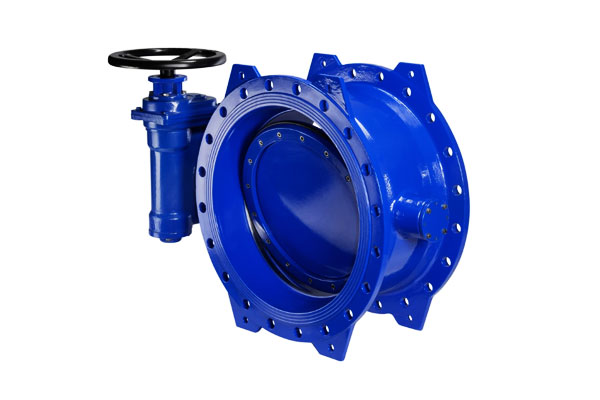
- Вода & Очищення стічних вод: Efficient for isolation and control of clean and dirty water.
- Нафта & Газовий: Used for fuel handling, refinery, and offshore systems.
- HVAC Systems: Regulating hot or chilled water and air distribution.
- Chemical and Petrochemical: Resistant materials handle aggressive fluids and vapors.
- Морський & Офшорний: Compact size is beneficial for tight engine rooms.
- Їжа & Beverage: Hygienic valves with PTFE or stainless internals are standard.
- Генерація живлення: Cooling water and auxiliary service lines.
- Pulp & Paper: Handles slurry and fiber-laden flows with robust disc and seat designs.
10. Butterfly Valve vs. Other Valve Types
| Означати | Клапан метелика | Клапан воріт | Глобусна клапан | Клапан |
| Операція | Quarter-turn (90° rotation) | Multi-turn (multiple turns to open/close) | Multi-turn (linear motion) | Quarter-turn |
| Контроль потоку | On/off and moderate throttling | Primarily on/off, poor throttling | Excellent throttling and flow regulation | Excellent shutoff, limited throttling |
| Падіння тиску | Low when fully open | Very low when fully open | Higher due to tortuous flow path | Minimal, full bore flow |
| Розмір & Вага | Компактний, легкий, suitable for large sizes | Bulkier and heavier | Bulkier, typically smaller sizes | Compact for small sizes; bulky for large sizes |
| Sealing Capability | Soft/metal seats, moderate tightness | Good shutoff | Excellent shutoff | Bubble-tight, very tight shutoff |
Actuation Speed |
швидко (чверть обороту) | Повільно (multiple turns) | Повільно (multiple turns) | швидко (чверть обороту) |
| Технічне обслуговування | легко, fewer parts | More prone to jamming, більш складний | Помірний, frequent maintenance needed | Requires disassembly for internal servicing |
| Вартість | Економний, especially in large diameters | Вищий, especially for large sizes | Помірний до високого | Вищий, especially at large sizes |
| Типові програми | ОВК, очищення води, low/medium pressure systems | Розподіл води, нафта & газові трубопроводи | Паровий контроль, precise flow applications | High-pressure isolation, Хімічна обробка |
| Обмеження | Not ideal for high-pressure throttling | Slow operation, not suited for throttling | Higher pressure loss, bulkier | Bulky and expensive for large diameters |
11. Критерії відбору
Choosing the right butterfly valve involves a thorough evaluation of multiple factors to ensure optimal performance, довговічність, and cost-effectiveness within a specific application.
Key criteria include:
Fluid Characteristics
- Type of Fluid: Clean liquids, slurries, корозійні хімікати, or gases—each requires specific seat materials and body construction to withstand erosion, корозія, і стирання.
- В'язкість: Higher viscosity fluids may require valves with enhanced sealing and actuator torque.
- Presence of Solids: Fluids containing suspended solids or particulates demand robust seats and body designs to prevent wear and leakage.
Operating Pressure and Temperature
- Pressure Rating: Match valve pressure class (Напр., PN10, PN16, Клас 150) to pipeline operating pressure to avoid premature failure.
- Діапазон температури: Consider seat and body material limits—rubber seats for low temperatures and PTFE or metal seats for high-temperature service up to 600°C.
Required Shutoff Tightness
- Клас герметичності: For critical isolation, triple-offset butterfly valves offer near zero leakage (Клас VI).
For less demanding applications, resilient seated valves provide economical sealing with acceptable leakage.
Valve Actuation
- Manual vs Automated: Determine whether manual lever, gear, пневматичний, електричний, or hydraulic actuators best suit the operation frequency, safety requirements, and integration into control systems.
- Speed of Operation: Applications requiring rapid open/close cycles may favor quarter-turn actuators.
Installation Constraints
- Space Availability: Custom Butterfly valves have a compact design, making them suitable for limited space installations compared to bulkier valve types.
- Connection Type: Consider compatibility with piping—wafer, перекидання, or flanged designs based on installation and maintenance needs.
Вартість проти. Performance Balance
- Weigh upfront costs, maintenance requirements, and expected lifespan. Sometimes investing in high-performance valves reduces total cost of ownership through reliability and fewer replacements.
12. Future Trends in Butterfly Valve Technology
- Smart Integration: IoT-enabled actuators with sensors for real-time monitoring (тиск, температура, положення), enabling predictive maintenance.
- Вдосконалені матеріали: Carbon fiber bodies (30% світліший за сталь) for offshore use; ceramic seats for extreme abrasion.
- Extreme Environments: Cryogenic models (-196° C) for LNG; high-temperature designs (800° C) for hydrogen plants.
- Стійкість: Low-leakage designs (Class VI+) to reduce emissions; recyclable materials for valve bodies.
13. Висновок
Custom butterfly valves are essential components in modern fluid control systems, known for their compact design, fast operation, і універсальність.
Originally conceptualized in the early 20th century, these клапани have evolved significantly to meet the growing demands of industries requiring efficient and cost-effective flow control solutions.
Сьогодні, butterfly valves are widely used in diverse sectors such as очищення води, нафта і газ, ОВК, Хімічна обробка, морський, і їжа та напої industries.
Their popularity stems from their ability to handle a broad range of fluids—including gases, рідина, and slurries—with minimal pressure drop and rapid shutoff capabilities.
Custom butterfly valves are a cornerstone of modern fluid handling systems due to their efficiency, низька вартість, і адаптивність.
Whether used in municipal pipelines, industrial processing, or precision-controlled environments, selecting the right butterfly valve—matched to pressure, fluid, and operational needs—is essential for long-term performance and reliability.
Це: Високоточні рішення для кастингу кастингу для вимогливих додатків
Це є спеціалізованим постачальником послуг з кастингу точності, Надання високопродуктивних компонентів для галузей, які потребують надійності, цілісність тиску, і розмірна точність.
Від сирої кастингу до повністю оброблених тіл клапанів та зборів, Це Пропонує рішення щодо кінця до кінця, розроблених для відповідності суворим глобальним стандартам.
Наш досвід кастингу клапана включає:
Інвестиційне кастинг для тіл клапана & Обрізати
Використання технології втраченого воску для виробництва складних внутрішніх геометрія та компонентів з щільно-толерантності з винятковими оздобленнями поверхні.
Пісочний кастинг & Кастинг цвілі з оболонки
Ідеально підходить для середніх та великих тіл клапанів, фланці, і капелюшки-пропонуючи економічно вигідне рішення для міцних промислових додатків, включаючи олію & Генерування газу та електроенергії.
Точна обробка для пристосування клапана & Цілісність ущільнення
Обробка ЧПУ місця, нитки, А герметичні обличчя забезпечує кожну складову частину, що відповідає вимогам щодо вимірних та герметичних продуктивності.
Діапазон матеріалу для критичних застосувань
Від нержавіючих сталей (CF8/CF8M/CF3/CF3M), латунь, пластичне залізо, до дуплексних та високолегованих матеріалів, Це приладдя клапанів, побудовані для виконання в корозійній, високий тиск, або високотемпературні середовища.
Whether you require custom-engineered steam traps, butterfly valve, plug valves, Глобусна клапани, клапани воріт, або велике обсяг виробництва промислового клапанів, Це ваш довірений партнер для точності, міцність, та забезпечення якості.
Поширені запитання
What is the difference between a wafer and lug-style butterfly valve?
Wafer valves clamp between flanges (no bolt holes), while lug valves have threaded lugs for bolted installation, allowing one-sided removal. Lug valves suit higher pressure (≤25 bar) than wafer (≤16 bar).
How long do butterfly valves last?
Service life ranges from 10–15 years for resilient-seated valves in clean service to 5–8 years for metal-seated valves in abrasive environments. Proper maintenance extends life by 30–50%.
Are butterfly valves suitable for slurry or abrasive fluids?
Metal-seated triple-offset valves are suitable; resilient seats erode quickly. Use hardened disc materials (Напр., Дуплексна нержавіюча сталь) for extended wear.

